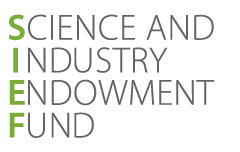High performance solar cell technology
SIEF supports High performance solar cell technology with integrated nanoplasmonic thin film & thermal management systems

Researching thermally stable solar cell technology with improved efficiency.
The challenge
The global drive towards making solar energy more competitive against low cost fossil fuels has given rise to some amazing solar technologies. However one of the biggest, but least publicised, challenges that solar cell researchers face is the thermal stability and scalability of their inventions. Solar cells typically heat up to around 50-60℃ under the Australian sun because a large proportion of the absorbed sunlight is converted to heat instead of electricity. Consequently, the solar cell’s efficiency drops significantly resulting in instability and reduced reliability.
The response
The goal of this ambitious project is to develop a large scale thermally stable solar cell technology with double the efficiency of current glass based thin film solar cells at half the cost. This will be achieved through the integration of a novel NanoPlas thin film technology and thermal management system for recycling and removing heat generated in the cells for optimal electricity conversion efficiency – using innovative low-cost processes. In 2015, a dedicated pre-pilot R&D production line will be deployed at Swinburne’s new state of the art Advanced Manufacturing and Design Centre in Melbourne.
The collaboration
Teams from Swinburne University of Technology and CSIRO have joined forces to address some of the fundamental challenges associated with solar PV technologies. This strong collaboration will combine the complimentary aspects of improved solar cell technology with advanced thermal management systems, paving the way for closer collaboration with industry. Suntech, a leading solar cell manufacturer, and Stanford University are project collaborators and bring deep expertise in industrial manufacturing and cutting-edge academic research to the project. and cutting-edge academic research to the project.
Projected impact
The Research is providing meaningful solutions towards transforming Australia’s existing energy and manufacturing industries through the provision of key technologies in energy generation and manufacturing.
- Projected impact economically includes cheaper, more robust and longer lasting, and more efficient renewable energy.
- Environmental impact includes increased options for renewable energy and a reduction in resources used to produce renewable energy.
- Community impact includes new knowledge and facilities that is rapidly closing the gap between research and the integration of new solar technologies into manufacturing processes, securing Australia’s leading position in technology transfer.
Download: High performance solar cell technology brochure [pdf · 71kb]
